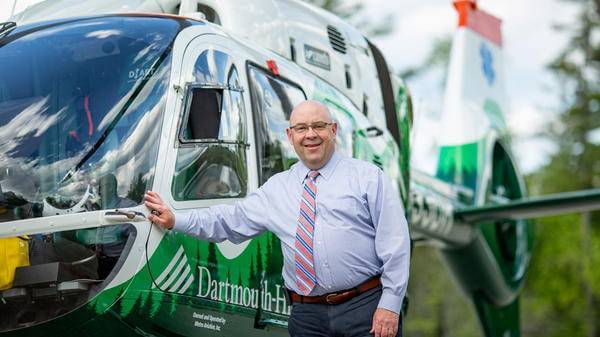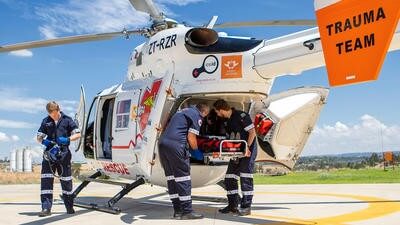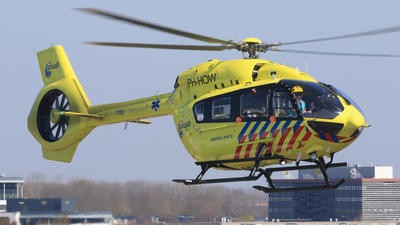Interview: Kyle Madigan, Board of Certification for Emergency Nursing

Mandy Langfield speaks with Kyle Madigan MSN, RN, CEN, CFRN, CTRN, CCRN, CMTE, BCEN Board Chairperson, on his extensive history with the BCEN and how it has evolved to serve the needs of certifying nurses
For how long have you been working with BCEN? How many different roles have you held in the organization during that time?
I started working with the Board of Certification for Emergency Nursing (BCEN) in 1998 when I was an item writer for the Certified Flight Registered Nurse (CFRN) exam. It was a great learning experience to see the back end of the exam development process and the science and statistics in creating a valid exam. I continued as an item writer for both the CFRN and the Certified Transport Registered Nurse (CTRN) and was promoted to the Examination Construction Review Committee (ECRC), where I had the opportunity to mentor new item writers. After chairing the ECRC for three years, I applied for a position on BCEN’s board of directors. I have been on the board for the past six years, having served as secretary/treasurer, chairperson-elect, and now as the chairperson.
It has been extraordinary to work with BCEN leadership, staff, and our hundreds of dedicated subject matter expert volunteers over several decades to develop multiple specialty certification programs across the whole spectrum of emergency care, to include pediatric emergency (CPEN) and, most recently, trauma (TCRN) in addition to the now-40-year-old Certified Emergency Nurse (CEN) and the two transport credentials.
Looking at today’s 50,000 or so BCEN-certified nurses, it is really something to see the ways being certified affects each nurse’s practice and patients, and how certifications and the nurses who hold them have advanced emergency nursing and emergency care.
How important is nursing specialty certification for flight and transport nurses, and their employers?
The medical transport industry is a leader in specialty certification. The Air & Surface Transport Nurses Association (ASTNA), which worked closely with BCEN on the development of the CFRN and CTRN, does a terrific job of explaining the clinical, patient and team safety, and communication benefits of certifications. The Commission on Accreditation of Medical Transport Systems (CAMTS), the accrediting body for critical care ground and air transport programs, has long encouraged the importance of specialty nursing certifications. Since 2010, CAMTS standards require all registered nurses (RN) to have a specialty certification relevant to their practice within two years of hire.
Several years ago, BCEN commissioned a large-scale research project involving over 9,800 nurses and their supervisors that compared CEN-holding nurses versus those who do not. It found supervisors rated CEN-holding nurses higher on all seven areas of emergency nursing expertise studied as well as patient care accuracy, safety, and technical performance. Ninety-two per cent of supervisors said it’s important to have CEN-certified nurses in their organization, and 93 per cent said it was important for those nurses to maintain their certification. Additionally, certified nurses felt more confident and have greater career success and satisfaction.
For a nurse considering whether it is time to become a Certified Flight Registered Nurse, what does the board certification process involve?
The hardest part of the certification process is often committing to start the process and scheduling the date for the exam. I hear from many nurses that once the exam date is scheduled, they feel the commitment to seeing the process through. Plenty go from starting to study to passing the exam in as few as 3-5 months, but you can pace your study on your own preference.
BCEN requires nurses who wish to take one of our certification exams hold a current, unrestricted RN license in the US or its territories. Nurses who train or work outside the US must get their degrees and licensure verified through BCEN’s international credential evaluation service. We generally suggest that nurses have two years of experience in the specialty area in which they wish to certify, but there is no minimum requirement of years.
Why does board-certified nursing care matter for patients and their families?
While nursing has long been held as one of the most trusted professions, caring for patients when they are at their most vulnerable is one of the greatest challenges we face. Nurses who take the initiative to become certified demonstrate the highest levels of commitment to their professional development. Specifically, board-certified nurses demonstrate their mastery of the entire body of knowledge for their respective specialty.

When should nurses consider specialty certification? Should it be done early on a career?
While this is ultimately an individual decision for each nurse, many are getting certified earlier in their careers, more employers are encouraging, rewarding, and even requiring it, and certification sets nurses up to stay current on knowledge and best practices. I, for example, knew early on in my career that I wanted to pursue specialty certification. I was working in a Level 1 trauma center emergency department and witnessed more senior nurses become CENs and began inquiring about their preparation and the process for becoming certified.
I date myself by stating that the internet was not available as a resource at that point in time; my first exam was with pencil and paper in a large auditorium. I clearly recall the feeling of accomplishment when I received the notification in the mail and was now a Certified Emergency Nurse.
A few years later, I became a flight nurse. Following BCEN’s recommendation, at the conclusion of my first two years flying, I applied to BCEN to take the CFRN examination and encouraged a colleague to prepare for the exam and test with me on the same day. In watching me prepare for the exam, my wife who was working in the emergency department decided she, too, wanted to test for the CEN exam. The three of us trekked to the testing center and all sat for the exams.
There is a strong sense of accomplishment in being able to demonstrate your mastery of the knowledge in a nursing specialty and have the privilege of being called a board-certified nurse.
Do you think that flight nurse certification has been given enough focus by the industry up until now? What is changing about the perception of flight nurse certification?
Specialty certification for transport nurses has garnered additional attention due to a number of different reasons, including the Covid pandemic. Having specialty certification certainly helps emphasize the value and importance to both the patients being transported and transport programs.
While the CFRN has been around since 1993, the distinctions between flight and ground transport and the ways they complement each other were also known, hence BCEN introduced the CTRN in 2006. Those distinctions and the need for both ground and air, and therefore the need for expert critical care ground transport nurses, are greater today than ever before thanks to technological advances, specialization and regionalization of healthcare facilities, and other factors, all of which have been further emphasized during the pandemic. Today, there are approximately 5,000 CFRNs and the CTRN is one of BCEN’s fastest growing programs.
What do you do for your current ‘day job’, and how does this complement your work with BCEN?
I am the Director of the Dartmouth-Hitchcock Advanced Response Team (DHART) at the Dartmouth-Hitchcock Medical Center in Lebanon, New Hampshire. As I transitioned from Flight Nurse at DHART to the Chief Flight Nurse, one of the first changes that I made was to elevate all our staff. I instituted that all staff must achieve specialty certification in their respective disciplines. From this decision, many of my staff went on to gain additional specialty certification in other specialties such as emergency, critical care, and neonatal and pediatric nursing.
You’re the sole nurse representative on the DOT’s Air Ambulance Patient Billing Advisory Committee. What’s the latest developments with the Committee, and what do you hope can be achieved by it in the long run?
The FAA Reauthorization Act of 2018 required the US Secretary of Transportation to establish an advisory committee to review options to improve the disclosure of charges and fees for air medical services, better inform consumers of insurance options for such services, and protect consumers from balance billing.
I decided that I wanted to help shape the future of the air medical industry and applied to serve on the committee. I along with 11 other individuals from across the industry were selected to sit on this committee, which includes state insurance commissioners, health insurance providers, and operators of air medical programs operators among others. It has been an honor to serve those doing the job of transporting the critical ill and injured across the US.
Following the initial meeting of the AAPB Advisory Committee, three subcommittees were formed which include members from the plenary committee as well as additional experts from across the industry. The three subcommittees were asked to evaluate the following categories: disclosure and distinction of charges and coverage for air ambulance services, prevention of balance billing, and state and Department of Transport consumer protection authorities.
The recommendations ultimately are targeted at taking the patient out of the middle, while mandating those improvements in disclosures be made by insurers. There needs to be increased transparency within the industry so that consumers can understand the charges associated with air medical transport between varying programs.
What are the key differences between a certified flight nurse and a certified ground transport nurse, and how might having a board-certified nurse contribute to transport teams’ successes?
Both flight and ground transport nurses care for critically ill or injured individuals in austere environments with limited resources. They must act authoritatively across the full range of clinical scenarios, be excellent communicators and collaborators, and as co-owners of the safety of the crew and patient. All while they minimize the distinctive aspects and impacts of air and ground environments.
A certified flight nurse demonstrates mastery of flight physiology and aircraft safety, whereas a certified ground transport nurse masters managing patients for longer duration trips and advanced equipment unique to the larger workspace that ambulances afford. Board certification validates that transport nurses are well-prepared to meet the needs of every patient in these similar but distinctive transport environments, and likewise contribute to their team’s success and safety.
For the first time, BCEN will have separate content outlines for the CFRN as of 31 August and the CTRN as of February 2022. This change was brought about by several factors, not the least of which was the outcome of the most recent role delineation study and advances in knowledge, technologies, and equipment. This will help delineate and clarify the important distinctions between air and ground and help nurses better prepare for each exam.
Are flight/transport nurses working outside the US eligible to earn BCEN certifications? What about military nurses?
Nurses around the world including military nurses may earn any of BCEN’s certifications. With our new international credentialing evaluation services, we’ve made it even easier for nurses educated and/or practicing outside the US to confirm they meet the eligibility requirements. For US military active-duty service members, reservist, and veterans, BCEN in fact offers a discount in recognition of their service.
How has BCEN, and perhaps other certification boards, evolved over time? More specifically, what else does BCEN offer besides certifications?
One of the greatest challenges for BCEN and other certification boards is to ensure our programs remain current in terms of content and practice roles. Nursing is a dynamic, constantly evolving environment, and BCEN is always looking at new and innovative ways to support nurses.
One of our biggest and most recent initiatives was launching the BCEN Learn continuing education platform. A big part of the value of certification is the fact that certified nurses have to demonstrate their currency in their specialty, so we gathered dozens of subject matter experts to create CE courses specifically for emergency, transport and trauma nurses. Nurses can pick and choose content that is relevant and interesting to them. We also have an extensive portfolio of free resources to help nurses, educators and employers support the certification journey.

September 2021
Issue
Keeping our aerial firefighters safe
As the volume and risk of missions increases, what can we do to make aerial firefighting aircraft and crew safer?
Certified action
Cleanspace, Lifesaving Systems, ISOVAC, Lite Flite, Northwall, and Renew Biomedical discuss the criticality of certifying equipment in and around the aircraft.
Kyle Madigan, BCEN
Madigan outlines the extensive history of the BCEN and its evolution to serve the needs of certified nurses
Mandy Langfield
Mandy Langfield is Director of Publishing for Voyageur Publishing & Events. She was Editor of AirMed&Rescue from December 2017 until April 2021. Her favourite helicopter is the Chinook, having grown up near an RAF training ground!





